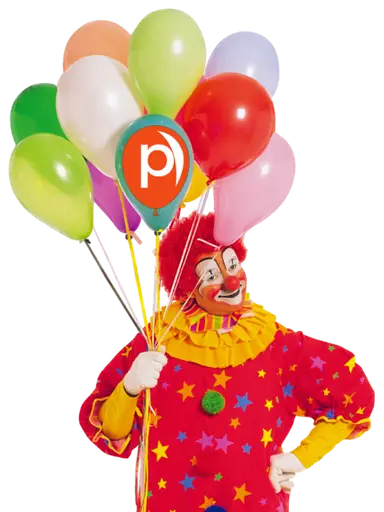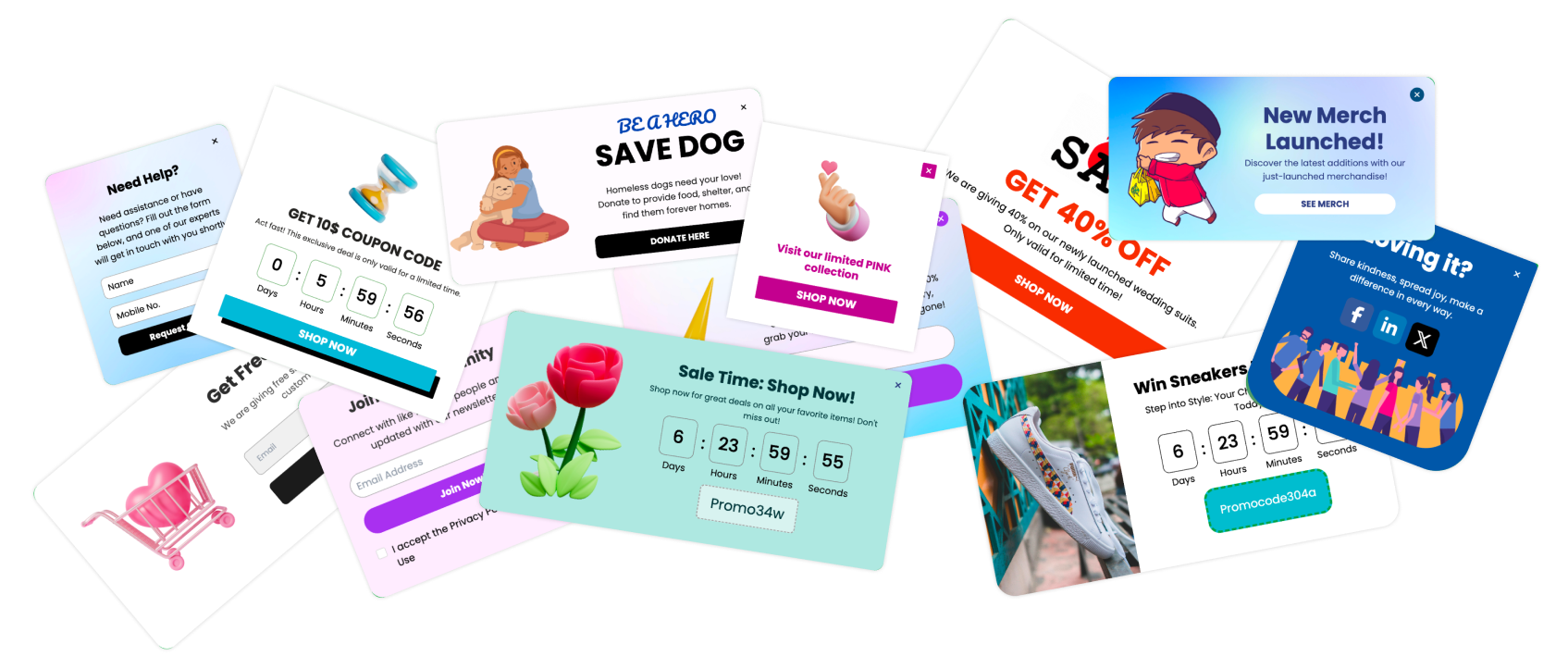“People trust people — not pixels. Recent sales popups remind visitors that real people are already choosing your brand.”
In today’s online world, where every brand claims to be “trusted by thousands,” users crave real, visible proof that those claims are true. That’s exactly what recent sales popups deliver — a small but powerful piece of social proof that shows live purchase activity happening right on your site.
Imagine you’re browsing an online store, and suddenly a subtle notification appears:
“Sarah from New York just bought this product 2 minutes ago.”
It’s authentic, real-time, and triggers instant curiosity — “If others are buying, maybe I should too.”
Recent sales popups are small notifications that display when someone makes a purchase or takes an action on your site (like signing up or subscribing). They usually appear in a corner of the screen with messages like:
“John just purchased the Starter Plan.”
“Lisa from Austin joined 10 minutes ago.”
“5 people bought this product in the last hour.”
Their purpose isn’t to interrupt — it’s to reassure. They act as proof that your business is active, trusted, and credible.
Here’s a quick snapshot:
| Element | Description |
|---|---|
| Goal | Build trust and trigger conversions through social proof |
| Ideal Placement | Bottom-left or bottom-right corner |
| Trigger Type | Real-time or recent (last few minutes/hours) |
| Best For | E-commerce, SaaS, and membership-based sites |
These popups can be real-time (pulling data from your store) or simulated (using anonymized or aggregated purchase data). Either way, they give visitors the same sense of reassurance — “I’m not the only one buying this.”
How Recent Sales Popups Work
Recent sales popups may look simple on the surface — a quick message about who bought what — but behind the scenes, they’re powered by smart automation, behavioral tracking, and real-time data.
When used right, they create the illusion of a lively marketplace — one where people are constantly buying, subscribing, or joining in. This liveliness builds credibility and makes your brand feel active and trusted.
“A quiet website feels risky. A busy one feels reliable — and recent sales popups make your site look busy in the best way possible.”
Real-Time Purchase Notifications Explained
At their core, recent sales popups are event-driven notifications that display whenever a purchase or sign-up event occurs.
The logic is simple but powerful:
A user completes a purchase or fills out a form.
That event is captured in your database or e-commerce system.
The popup tool (like Poper) fetches that event in real time.
A dynamic notification appears on your site — “Maria from London just bought this product!”
This real-time system helps your visitors see genuine proof of activity, keeping them engaged and motivated to take the same action.
Example Flow:
| Step | Event | Action |
|---|---|---|
| 1 | Purchase made in Shopify | Poper fetches order details |
| 2 | Data processed (e.g., name, location, product) | Personalized popup created |
| 3 | Popup displayed on product or checkout page | Visitor sees proof of purchase |
| 4 | Analytics recorded | You track impressions and conversions |
Data Sources (Actual Orders vs. Simulated Events)
There are two main types of data sources used for recent sales popups:
| Type | Description | Example | Best For |
|---|---|---|---|
| Real Data | Pulls live orders or sign-ups from your database or e-commerce tool | “John just subscribed to the Growth Plan.” | Active stores or SaaS platforms |
| Simulated Data | Displays recent (not fake) events in rotation for consistency | “Someone from Toronto purchased 20 mins ago.” | New stores or low-frequency products |
Using real order data builds stronger authenticity, but simulated (yet truthful) data can keep engagement consistent during slower traffic hours.
Where and When They Appear
| Placement | Description | Why It Works |
|---|---|---|
| Bottom-left or bottom-right | Non-blocking area near visual attention zones | Subtle and familiar placement |
| Product pages | Displays while visitors evaluate options | Reinforces trust and demand |
| Checkout pages | Builds last-minute reassurance before purchase | Reduces cart abandonment |
| Homepage / Landing page | Creates an impression of activity | Great for first-time visitors |
Trigger timings also matter — popups should appear after 5–10 seconds of browsing or after 50% scroll depth, not immediately upon arrival.
The Psychology Behind Them

Recent sales popups don’t just look impressive — they work because they tap into deep, natural human instincts.
Every time a visitor sees a popup saying, “Someone just bought this,” they’re subconsciously reassured that the decision they’re about to make is safe, popular, and validated.
“When people see others acting confidently, their doubts disappear — that’s the power of social proof.”
This psychological reinforcement makes these popups more than just a marketing gimmick. They’re behavioral trust builders, quietly pushing users closer to conversion.
Power of Social Proof
| Visitor Stage | Common Emotion | How Recent Sales Popups Help |
|---|---|---|
| New visitor | Doubt / Uncertainty | Builds credibility instantly |
| Browsing user | Curiosity | Reinforces trust and engagement |
| Checkout user | Hesitation | Confirms legitimacy and drives purchase |
FOMO (Fear of Missing Out)
The Fear of Missing Out, or FOMO, is one of the strongest motivators in online behavior.
When visitors see others actively buying, joining, or upgrading, it creates a subtle sense of urgency:
“Others are getting this now. Maybe I shouldn’t wait.”
That emotional push drives faster decisions — especially in scenarios where visitors are already interested but just need a final nudge.
Building Instant Credibility
Trust is the single biggest barrier to online conversion — and credibility is the fastest way to remove it.
Recent sales popups act as micro-endorsements. Every time one appears, it silently says,
“Real people are trusting us right now.”
This is especially powerful for:
New brands building early credibility.
SaaS tools trying to encourage signups.
Niche stores needing validation in competitive markets.
Key Benefits of Using Recent Sales Popups
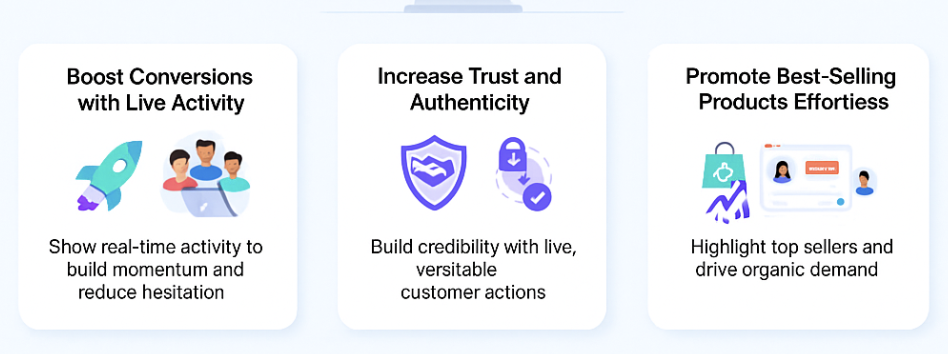
Recent sales popups aren’t just small notifications — they’re conversion amplifiers.
They combine credibility, urgency, and real-time validation into one of the most persuasive micro-experiences a user can have on your site.
When placed and timed correctly, these popups can increase conversions, elevate brand reputation, and highlight your most popular products — all without heavy advertising or intrusive tactics.
Let’s break down the top benefits.
Boost Conversions with Live Activity
Visitors rarely buy the first time they land on your site. They need reassurance — proof that they’re making the right choice.
That’s where live sales activity comes in.
When users see that others are actively purchasing, it removes friction and adds social momentum to your funnel.
Example:
A visitor is exploring your product page, and suddenly a popup appears:
“Marcus from London just purchased this 3 minutes ago.”
That subtle notification tells the visitor, you’re not the only one considering this. It replaces hesitation with confidence.
Increase Trust and Authenticity
Trust isn’t built through flashy banners — it’s built through consistency and evidence.
Recent sales popups show live, verifiable activity, which immediately gives visitors the confidence that your brand is active and legitimate.
This is especially powerful for:
New businesses building credibility.
SaaS companies showing real user growth.
Membership platforms highlighting new joiners.
Even a single popup like “Nisha joined 5 minutes ago” can shift a user’s perception from “Is this real?” to “People are actually joining!”
Promote Best-Selling Products Effortlessly
One of the smartest ways to use recent sales popups is to highlight your most popular products or plans automatically.
When visitors see that a specific product or plan is being purchased frequently, they associate it with quality, demand, and reliability.
Example:
“12 people bought the Pro Plan in the last 24 hours.”
That one line promotes your product, boosts trust, and creates a sense of movement — without you having to manually advertise it.
4 Popular Types of Recent Sales Popups
Not all sales popups work the same way — the best ones match your product, audience, and intent.
Some aim to create trust, others spark curiosity, and some focus on driving faster decisions. The key is to pick the right format for your goals.
“The best popup isn’t the flashiest one — it’s the one that feels the most human.”
Let’s explore the four most effective types of recent sales popups that every online business can use.
1. Live Sales Alerts

Live sales alerts are real-time notifications that display immediately after a purchase happens. They’re the most direct form of social proof.
These are ideal for high-traffic e-commerce stores, SaaS tools, and online courses where new purchases or signups occur frequently.
Example:
“Priya from Pune just purchased the Annual Plan.”
This format tells visitors, “People are buying right now.” It makes your website feel active, trusted, and in demand.
Why it works:
Reinforces popularity and demand
Creates urgency for undecided visitors
Strengthens brand credibility instantly
2. Trending Product Notifications
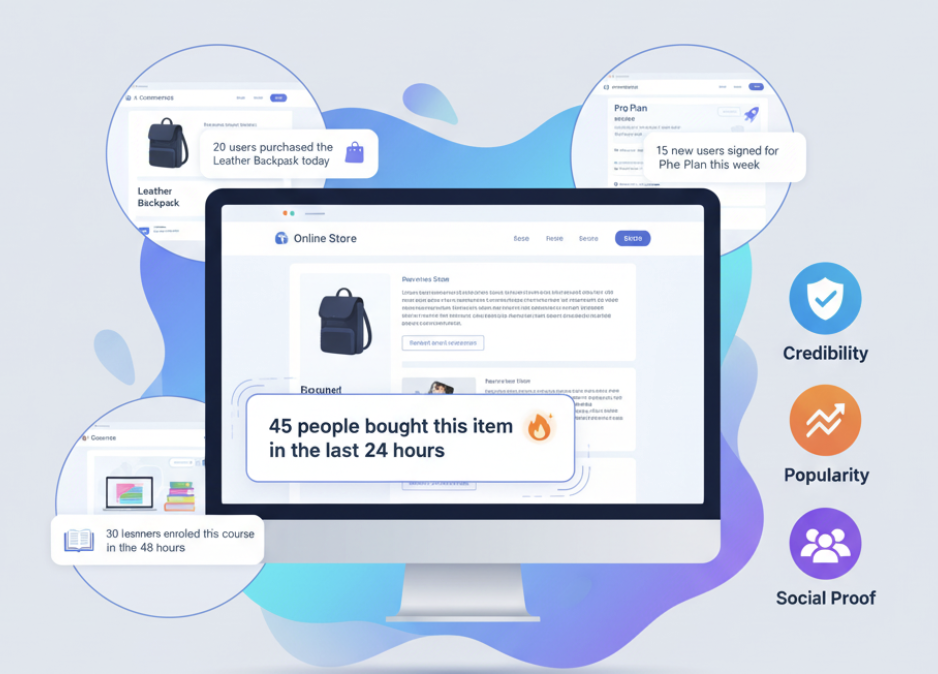
Not every purchase happens in real time — and that’s okay. Trending product popups summarize recent purchase activity over a short period (e.g., the past few hours or days).
These popups tell users what’s popular or “hot” right now.
Example:
“45 people bought this item in the last 24 hours.”
That single line implies trust, quality, and urgency — all at once.
| Use Case | Example | Trigger |
|---|---|---|
| E-commerce | “20 users purchased the Leather Backpack today.” | On product page |
| SaaS | “15 new users signed up for the Pro Plan this week.” | On pricing page |
| Courses | “30 learners enrolled in this course in the last 48 hours.” | On landing page |
Why it works:
Creates credibility without constant sales
Highlights your best-performing products
Encourages new users to follow the crowd
3. Geo-Based “Nearby Purchase” Popups
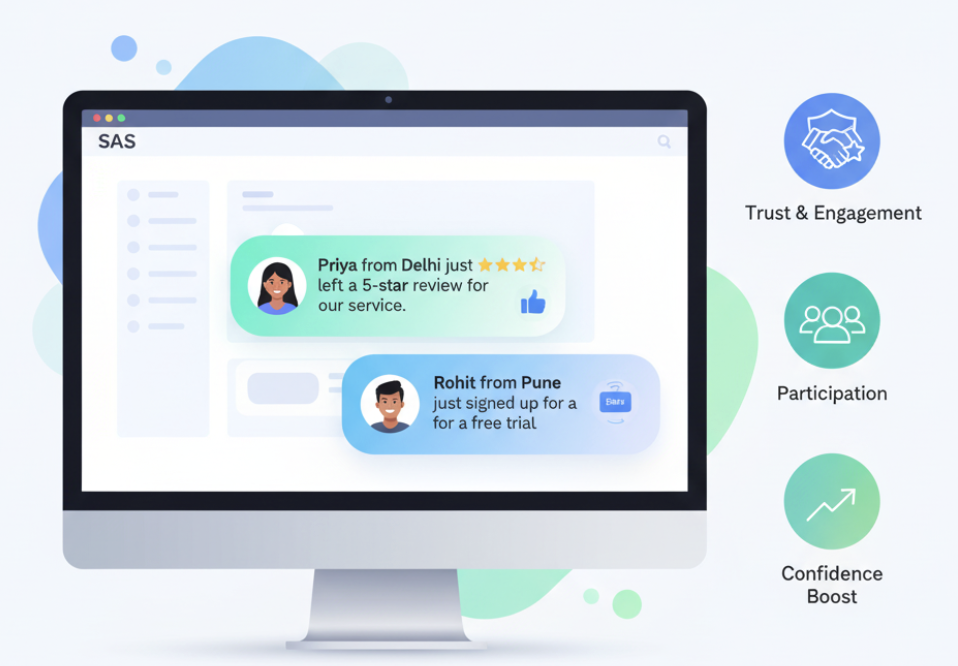
People trust local activity more than global claims. Geo-based popups take advantage of that by showing notifications from nearby locations.
Example:
“A customer from Bengaluru just bought this product.”“5 users from Mumbai joined today.”
This approach makes your site feel more personal and relevant. When users see someone near them taking action, they instinctively feel safer doing the same.
Why it works:
Creates a sense of community
Enhances relevance through location context
Works beautifully for region-based services and stores
4. Review or Signup Activity Alerts
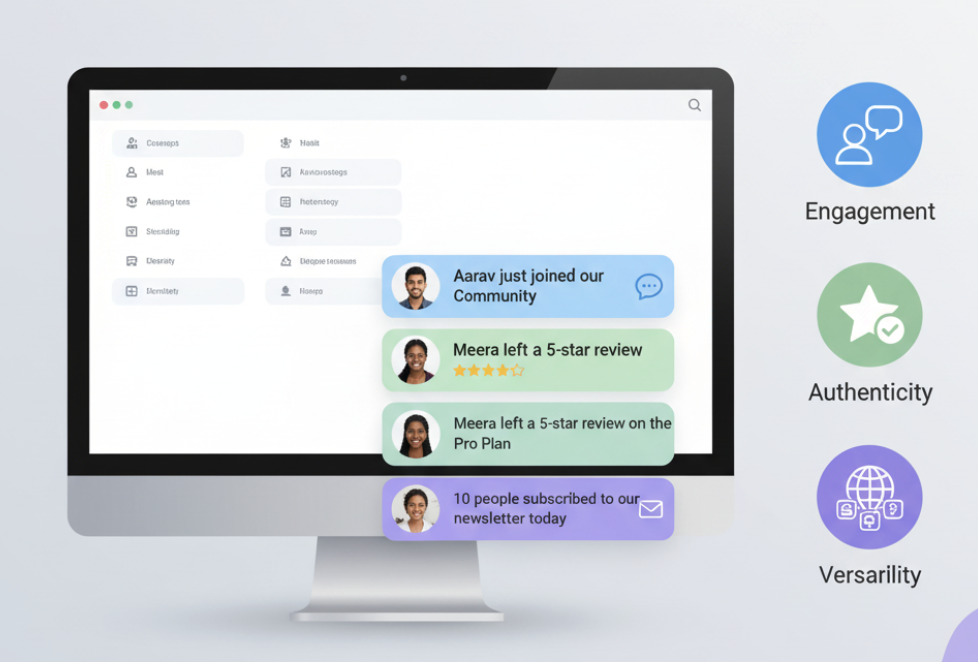
These are not strictly “sales” popups — but they tap into the same psychological principle of social proof.
Instead of showing purchases, they show recent member signups, newsletter subscriptions, or reviews submitted.
Examples:
“Aarav just joined our Growth Community.”
“Meera left a 5-star review on the Pro Plan.”
“10 people subscribed to our newsletter today.”
They’re great for SaaS, communities, digital creators, and startups that may not have frequent sales but still want to show ongoing activity.
Why it works:
Reinforces engagement and authenticity
Highlights user involvement beyond transactions
Works across all website types (not just e-commerce)
Timing and Targeting Tips
You can have the most beautiful popup design in the world — but if it appears at the wrong time, it’ll fall flat.
Timing and targeting are where recent sales popups either shine or fail.
The goal is simple: show the right message to the right person at the right time.
“A well-timed popup doesn’t interrupt — it inspires.”
| Trigger Type | When It Appears | Ideal Use Case |
|---|---|---|
| Time Delay (5–10 seconds) | After a short visit duration | Perfect for first-time visitors |
| Scroll Trigger (50–70%) | Once user has engaged with page | Great for blog posts or landing pages |
| Exit-Intent | When user moves cursor toward exit | Saves abandoning visitors |
| Page-Based | Only on key pages (pricing, checkout) | High conversion opportunity |
This ensures that your popup always feels timely, not random.
Creating Recent Sales Popups in Poper
You don’t need a developer, designer, or complex integration to show live sales notifications.
With Poper, you can set up stunning, smart, and high-performing recent sales popups in just a few minutes — no code required.
“With Poper, building trust isn’t technical — it’s as easy as creating a story that your users can see in real time.”
Let’s go through the process, step-by-step.
Choose a “Recent Activity” Template
Once you’re logged in to your Poper dashboard, head to the Templates Library.
Select the “Recent Activity” or “Sales Notification” category.
Here, you’ll find dozens of ready-to-use popup styles designed specifically for:
E-commerce stores (Shopify, WooCommerce, etc.)
SaaS products (showing new signups or plan upgrades)
Membership sites (highlighting recent joins)
Each template comes optimized for visibility, responsiveness, and conversion — so you don’t start from scratch.
Connect Store or CRM Data
Next, link your data source.
Poper supports direct integrations with:
Shopify
WooCommerce
Stripe
Zapier (for CRM and form data)
Custom Webhooks
Once connected, Poper automatically pulls real-time purchase or signup events and displays them dynamically in your chosen template.
You can choose between:
✅ Live Data Mode – show real-time purchases or form submissions.
✅ Recent Activity Mode – show recent (past hour/day) events for steady flow.
Customize Copy, Style, and Triggers
Here’s where the magic happens — your customization panel.
Inside Poper, you can edit:
Text: Change names, messages, or tone (e.g., “Someone just joined!” → “Priya from Delhi joined 5 mins ago.”)
Design: Adjust fonts, colors, corner position, and animation style.
Icons/Images: Add product thumbnails, avatars, or brand logos.
Behavioral Triggers: Set when and where the popup appears (scroll, delay, exit intent, or geo-location).
Example configuration:
| Setting | Example | Impact |
|---|---|---|
| Trigger | After 8 seconds of browsing | Feels natural, not forced |
| Placement | Bottom-left | Subtle and familiar |
| Animation | Fade-in | Smooth and attention-grabbing |
| Frequency | One popup every 30 seconds | Prevents overload |
Preview, Publish, and Analyze
Once your popup looks perfect, hit Preview to test it.
You’ll see how it behaves in real-time scenarios across devices.
When you’re satisfied, click Publish — and Poper will automatically embed your popup on your website.
You can choose:
To show it globally across all pages
Or restrict it to specific ones like product, checkout, or pricing pages
After publishing, head to Poper Analytics. There, you can track:
Impressions (how many users saw it)
Clicks (how many interacted)
Conversions (how many took action afterward)
You can also enable AI Recommendations, where Poper’s built-in AI suggests:
The best timing for maximum impact
Copywriting improvements
Visual layout tweaks to boost performance
This makes continuous optimization easy — even for non-technical users.
Summary
How Recent Sales Popups Build Social Proof
At their core, recent sales popups are trust-builders in motion.
They turn invisible customer activity into visible validation — helping visitors feel confident that they’re not alone in their decision.
Throughout this guide, we’ve explored how these small, dynamic notifications create a big impact by combining social proof, urgency, and authenticity.
Let’s recap the key takeaways:
✅ They show real-time activity, building instant credibility and reducing buyer hesitation.
✅ They trigger FOMO, encouraging faster purchase or signup decisions.
✅ They highlight your most popular products or plans, promoting social momentum.
✅ They’re easy to build with Poper, no code required — just smart templates, real data, and instant analytics.
✅ They help every kind of business — from e-commerce stores and SaaS platforms to communities and online educators.
By integrating them thoughtfully, you transform your website from a static storefront into a living, breathing experience — one that feels active, trustworthy, and socially validated.
And with Poper, you can make that transformation in minutes, not weeks.
Common Mistakes to Avoid
Before you go live, make sure you avoid these common pitfalls:
❌ Showing too many popups at once. It overwhelms users and hurts credibility.
✅ Limit to one popup every 20–30 seconds and no more than 3–4 per session.
❌ Using fake or exaggerated data. Users can tell when something feels off.
✅ Use real purchase or signup activity — or anonymized real events if privacy is needed.
❌ Poor placement or intrusive designs.
✅ Keep popups subtle, branded, and easily dismissible.
❌ No testing or analytics.
✅ Track conversion rates and optimize regularly using Poper’s analytics dashboard.
FAQs
Do sales popups really increase conversions?
Yes — studies show that displaying recent sales notifications can increase conversions by up to 35%. They reduce buyer hesitation by showing real-time proof that others are actively purchasing or joining.
How often should I show them?
Ideally, show one popup every 20–30 seconds with a short 5–7 second display duration. Avoid spamming users with too many alerts.
Poper’s frequency control feature lets you automatically limit how often a popup appears for each user session.Can I use fake or simulated data?
While some tools allow fake data, it’s not recommended. It can hurt your credibility long-term.
Instead, Poper lets you display real or anonymized recent activity, maintaining authenticity while protecting user privacy.What’s the best placement for recent sales popups?
The bottom-left or bottom-right corner of the screen works best. It’s non-intrusive yet noticeable.
Avoid top or center placements, as they interrupt reading flow.Can I use recent sales popups without coding?
Yes — that’s what makes Poper stand out.
You can create, design, and publish professional-grade sales popups using its drag-and-drop interface and pre-built templates — all without writing a single line of code.



